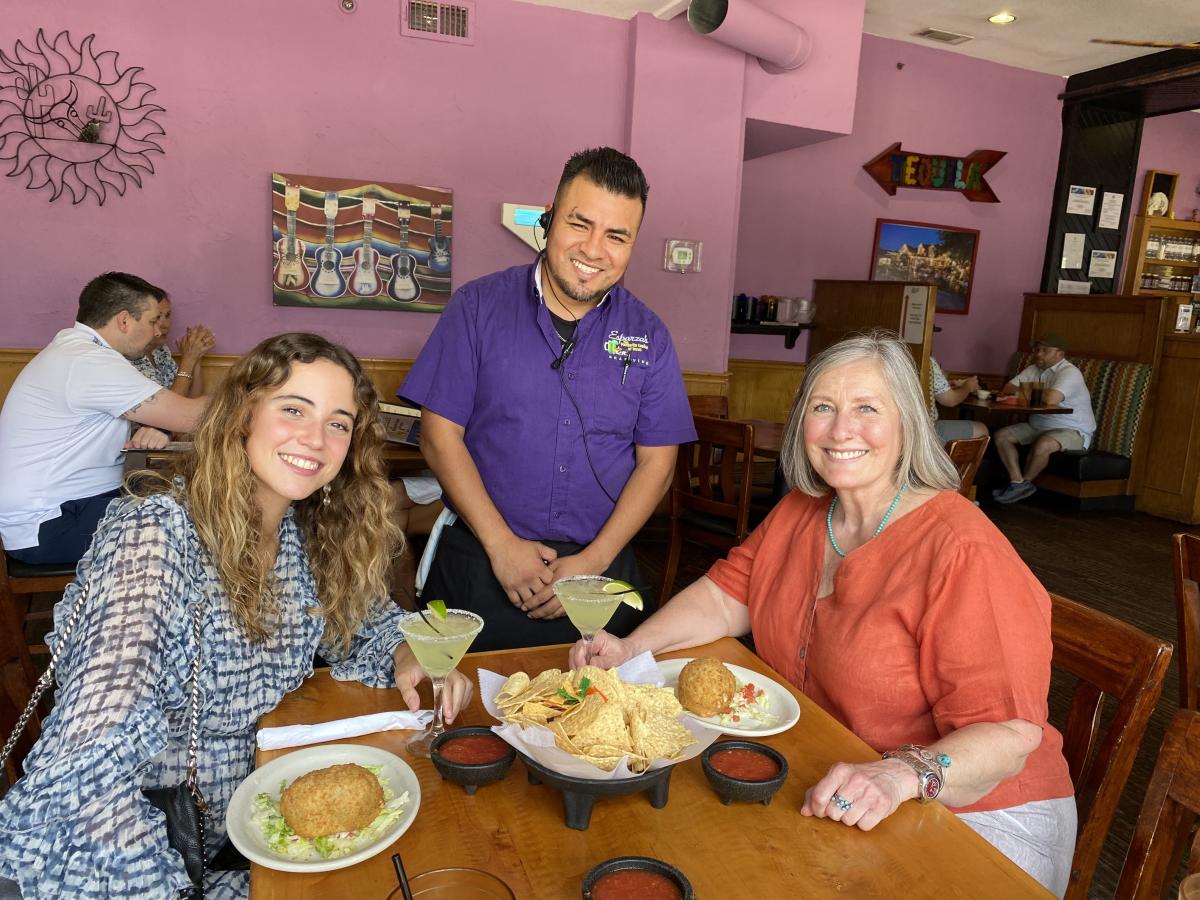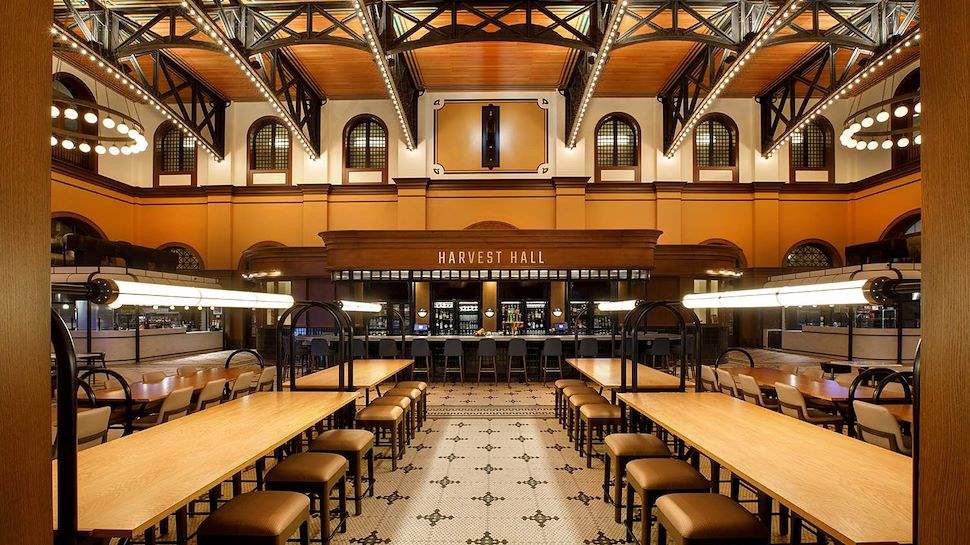Inside a Pair of Legendary Historic District Eateries

1 Feb 2025
Blog, News
Millions of people visit Grapevine every year, drawn from around the world by destination attractions and top-notch hotel stays. But most of the City’s daily visitors come from nearby markets rather than far-flung destinations. Some have favorite boutiques or tickets for a family-friendly event. Others come seeking a memorable meal from one of Grapevine’s celebrated restaurants.
There’s no shortage of award-winning and highly-rated eateries in Grapevine, and something for nearly every palette and budget. Local owners and chefs see that diversity as essential; creating a magnetic pull for foodies while allowing each vendor to carve out a niche.
The pattern holds in shopping centers around the City but it’s especially evident on Main Street, where beloved restaurants have built potent support over decades. To get a better understanding of what makes this area so unique, we talked to a pair of operators with half a century of expertise on their collective resumes: Dan Weinberger, owner of the acclaimed deli that shares his name, and Steve Brown, co-founder of Esparza’s Restaurante in the middle of the Historic District.
Two Paths to the Same Destination
Neither Brown nor Weinberger expected Grapevine to be their long-term home. The former grew up in Richardson and learned the culinary craft in Dallas, while the latter comes from a long line of deli owners and planned to locate his shop in Southlake Town Square. Brown came across his property by chance and acquired the restaurant from a pair of part-time owners in the 1980s. Weinberger signed his lease – now the oldest in his building – on the spot after a walk-in visit over twenty years ago. He was the second tenant to move in, but the Build-a-Bear workshop that preceded him has long since moved away.

“We were living in Southlake at the time, and Town Square was under construction. I met with Brian Stebbins and his group, and we were just ready to sign the contract to open in Town Square in Southlake,” Weinberger said. “[But] they had just built the building that I’m in right now, so I thought I would just ask. I walked in, and within ten minutes of meeting the landlord and seeing that the contract was only 7 pages long as opposed to 42 at Town Square, I decided to sign on the spot. And while I was leaving, I happened to look up – it was right before GrapeFest and they had the banners up, with the City logo on the sign – and I paused and thought ‘that’s my family crest.’ My family crest is grapes, because Weinberger means Vineyard. So here I am, in Grapevine, actually built on a vineyard. It’s kind of kismet that we are where we are.”
The deli has become one of Grapevine’s most decorated restaurants, picking up top honors in DFW last year and cultivating a loyal following over the years since they first launched. According to Weinberger, they almost failed in the early years because the market didn't respond to their initial deli concept, which featured bagels, knishes, lox, and blintzes. The sandwiches sold, however, and the shop successfully changed course to take advantage of their popularity.
Two blocks North, Esparza’s Restaurante boasts an even more colorful history.
“It has a long history. It was built, originally, as a home. And then the Lucas Funeral Home operated in that building for, I think, 40 years,” Brown said. “When we first opened in ’85, there were locals that would not eat here because they had used it as a funeral home. Which, certainly, understood. But now when I tell people it used to be a funeral home, they call B.S. on me. They don’t believe it because it is a pretty wild story.”
Making the Most of Every Moment
It took several rounds of renovation to shape Esparza’s into the restaurant it is today, with one of the City’s most iconic patios and a reputation for top-notch margaritas. Brown and his founding partner, Johnny Esparza, purchased their building forty years ago and spent the intervening time building a reputation and an atmosphere. But the core of the business – a commitment to excellent service and ongoing relationships – hasn’t changed.
“I call it working the room. I’m really big on that with my management team: you want to touch every table sometime in their meal process. Preferably after they’ve been served food, but not long after that, to make sure everything is good," Brown said. "I make sure to walk the whole dining room, and if there’s a familiar face I’ll stop and visit with them. It’s generational now; the kids that were coming in when I first opened now have their kids and they come in, so we’re probably close to four generations now. It’s really cool and gratifying.”

The staff is generational, too: Brown estimates that half a dozen employees are in their third decade of service, and he’s lost count of the number who have been with him since at least 2015. The team at Weinberger’s, however, is built a little differently. As a quick-service shop served through a single counter, their focus is on efficiency rather than intimacy.
“I used to design restaurants. When you walk in, you have five senses, right? What’s the first sense you use walking into a restaurant? Sight. Followed by sound, then smell. Then it’s touch, and then it’s taste. So actually tasting it is the last piece of the puzzle. If the first four don’t work just right for you, you’re not going to get five stars,” said Weinberger. “In my shop, it’s yellow and red. Agitating. Then we have the television going and the music going. Also agitating. Our chairs are semi-comfortable, so you come in for the food and the conversation, but after a while your rear end gets sore. You’re done. ‘I’m out of here.’ So there is thought behind what I did with my shop.”
The store turns over like clockwork and uses a ghost kitchen to supplement and speed up preparation and online ordering, but that doesn’t make Weinberger’s Deli any less a part of the Historic District tapestry. In fact, both owners agreed on the key element in their success.
Embracing the Collaborative Spirit of Main Street
As much as store design and training matter, both Weinberger and Brown were quick to point the broader community when talking about their success. Neither one could imagine running their store anywhere else, as much for sentimental reasons as practical ones. They benefit from conferences that lure in hungry business travelers and festivals that pack the streets around their stores. But, more importantly, they see every one of their peers and customers as part of a unique group that defines the area.

“Everybody is working for the good of Grapevine because they know if Grapevine does well, they’re going to do well. I don’t care what kind of business they have. People think the other restaurants are my competitors; I just think they’re crazy friends that do the same thing I do for a living,” said Brown. “You have to be a little bit crazy to want to do this for a living, so I’m just delighted that other restaurants have been successful as well. I can’t remember the last time somebody opened something down here and closed it – well, there has been one recently, but they were more of a small chain – everybody seems to do real well down here. We just feed off each other.”
The Historic District sees millions of visits every year, many from first-time travelers in search of something unique and authentic. Both restaurants offer that, and each extends the invitation for more. Whether by catering local events, supporting nonprofits, or taking part in the City’s annual festivals and activations, each business owner feels responsible for creating an environment that welcomes visitors, nurtures businesses, and draws travelers back year after year. For them, there’s no stronger testament to the power of placemaking than the longevity of businesses on Main Street.
“Grapevine has got to pat itself on the back,” Weinberger said. “We’ve got Fabien’s Main Street Bistro. We’ve got Big Fish. We’ve got Cero’s Heroes. We’ve got Napoli’s. AJ’s. These restaurants have gone the test of time, and it’s because of not just the food they serve, but the familiarity and acceptance. Welcoming people to Grapevine, that’s our passion. To make these people happy when they come to our town; we want them to come back.
“All I can say is how grateful I am to have come to Main Street. The decision I made 22 years ago – which, for years, I kind of thought I had made a mistake – has come back a thousand fold. Not just from the business I have, but the friends that I’ve made in my shop. I get emotional about it, because I’ve got three generations of people coming int my store now. I had a guy come in yesterday whose son was three years old when I opened. He’s now 25, and he’s got kids. That makes it all worth while.”
For more details straight from the people behind these concepts, check out the ‘Growing Grapevine’ podcast;g streaming here on our site or your favorite app. You can also find us on social media, reach out directly to staff, or join our monthly newsletter for ongoing updates about the City of Grapevine.
More Topics








